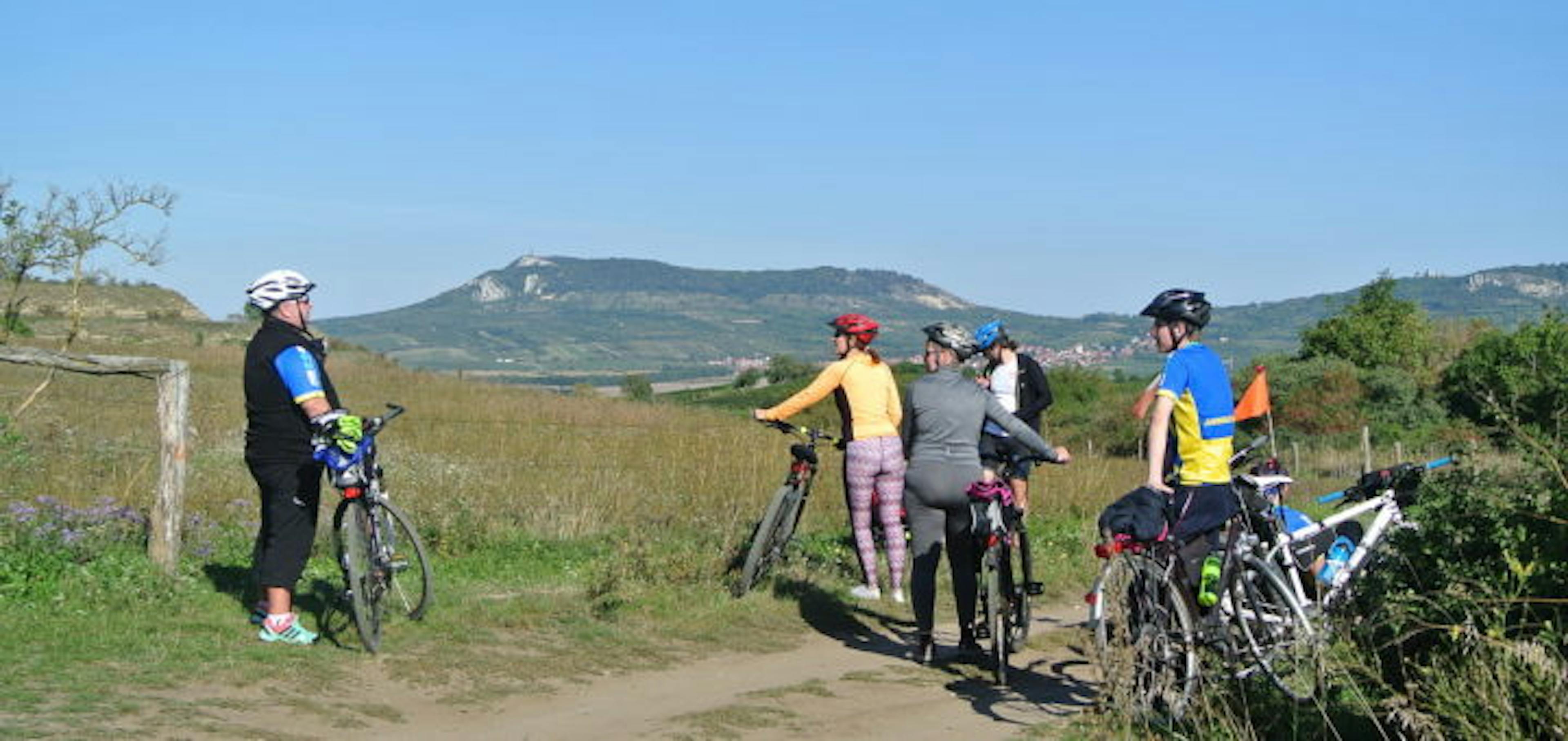Through the Charvátská vineyard to the Old Mountain
Information about the route
The area of the Dunajovice Hills, which lies to the west of the popular Pavlov Hills, is the most forgotten part of South Moravia. In the clay subsoil of the Dunajovice Hills, the most thriving are the Riesling and Veltliner. The scenery of abandoned vineyards, uncultivated fields and fallow fields creates a special atmosphere of a land without people.
The start of the trip is in Mikulov, the wine centre, a town with an unprecedented concentration of Renaissance and Baroque monuments. It is possible to wander the corners of this Moravian provincial centre of the Jewish community and ancestral seat of the powerful Ditrichstein family for a whole day and still not see them all. However, if you are looking for more nature, views and vineyard tracks, take the shortest route through the town up into the Pavlovské and Dunajovice hills. From the square we therefore head north along the signs of the Moravian Wine Route. Before we finally leave Mikulov, we have the opportunity to visit the Na Turold cave, one of the attractions of this extraordinary town, for the price of a short detour. After Mikulov, we climb along the Moravian Wine Trail to the Pavlov Hills and after crossing the highest point of the trip at theThe highest point of the hike, the Kočičí skála monument, we descend along the Stará hora cycle route to Bavor, one of the most picturesque wine-growing villages in the Pálava region. The inhabitants of Bavor have been growing grapes since time immemorial and the agricultural and wine-growing character of the village has been preserved to this day. From Bavaria, we continue along a comfortable descending asphalt road between vineyards and after crossing the busy I/52 road we descend to Dolní Dunajovice, the birthplace of the first Austrian president Dr. Karl Renner. The largest wine-growing village in Moravia manages over 56 hectares of vineyards. The dominant feature of the village is the Baroque church of St. Jilja with a Gothic core. The rural buildings with Baroque gables forming the main village square still bear traces of the life and economy of the original German inhabitants of the border region. Beyond the village we are heading towards the Dunajovice hills. This national natural monument with its highest peak, Velká Slunečná, is today a varied and valuable botanical unique thanks to unfinished work in the past. A comfortable asphalt road with no car traffic leads us further westwards to the foot of Stara Hora, where it joinsto the Mikulov wine trail, which passes through vast vineyards and offers beautiful views of the Dunajovice hills. Those who are not discouraged by the climbs can take a part of the Stará hora wine trail up to a lookout point with an exceptional view, while others can continue along the "asphalt road" to Novosedel.

Just before Novosedly, watch out for a short, but unpleasant, section on the II/414 road. As a reward, we then pass a number of typical wine cellars, which directly invite you to stop and taste. After Novosedly, the route continues along a quiet flat road to Nový Přerov. The settlement was originally inhabited by Croats who lived here until the end of World War II. After the war they were evicted and the Iron Curtain mercilessly preserved the village and its surroundings for 40 years. Today the village is a crossroads of long-distance and local cycling routes and a "Mecca" of cycling. Continuing south, we disconnect from the Mikulov wine trail and head towards our Austrian neighbours. The road follows little-traveled roads and after a longer flat stretch the terrain starts to undulate again. First we climb up the Galgenberg hill with its picturesque cellar alley, one of the most beautiful in Austria. The hill, also known as the Gallows Hill, has 185 wine cellars in two or three rows above each other. From May to October the cellars are open daily on the Galgenberg. After the second climb beyond the village of Pottenhofen, the panorama of Mikulov appears, which is quickly reached by a comfortable descending road with zero traffic. Before reaching Mikulov, we pass the Mikulov-Ottenthal border crossing, which is certainly worth a stop. The trip ends again in Mikulov, where you should definitely not miss a visit to the castle grounds, the Jewish cemetery, DitrichšDitrichstein's tomb, the Upper Synagogue or a hike to Svatý Kopeček or Kozí hrádek, the views are worth it!